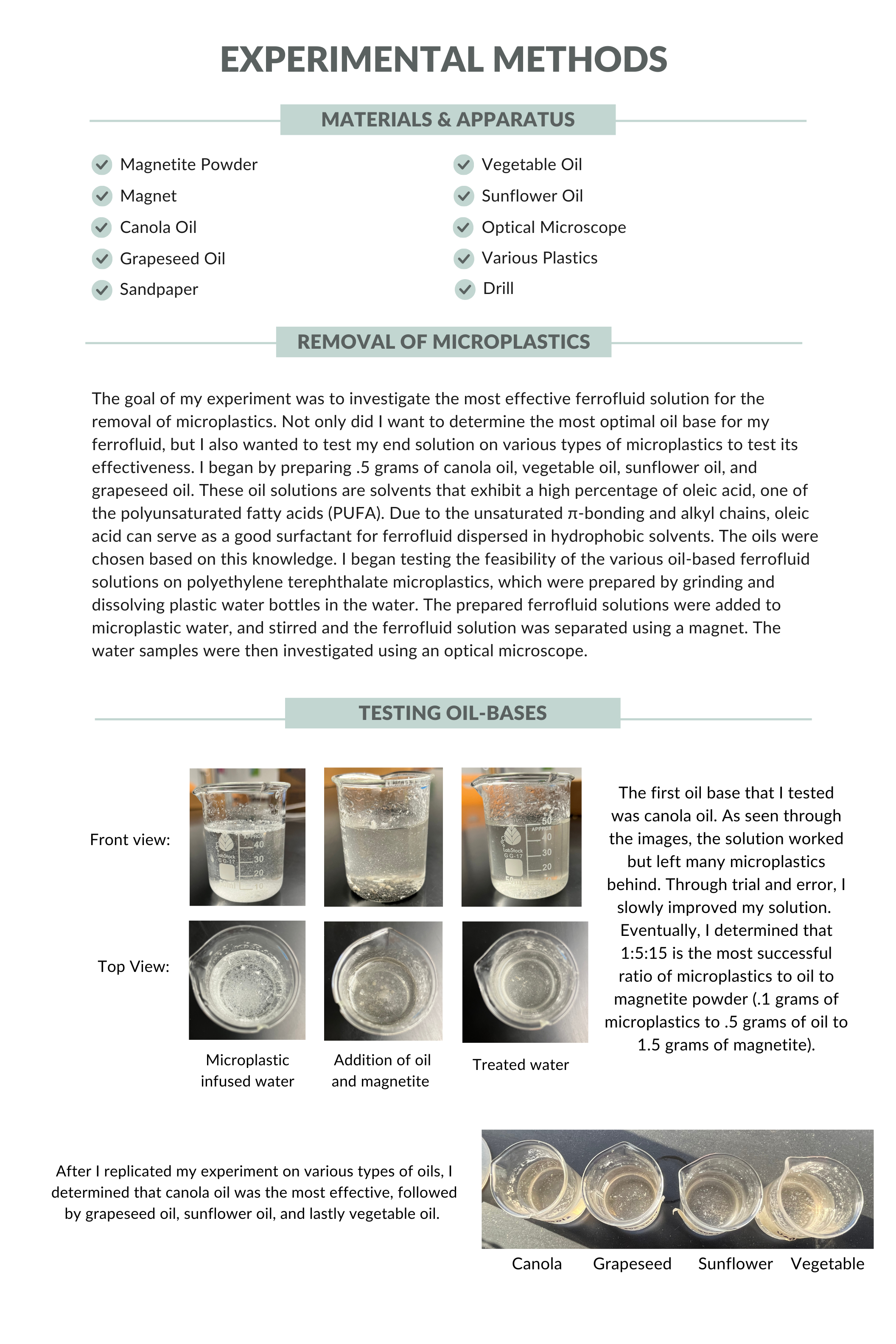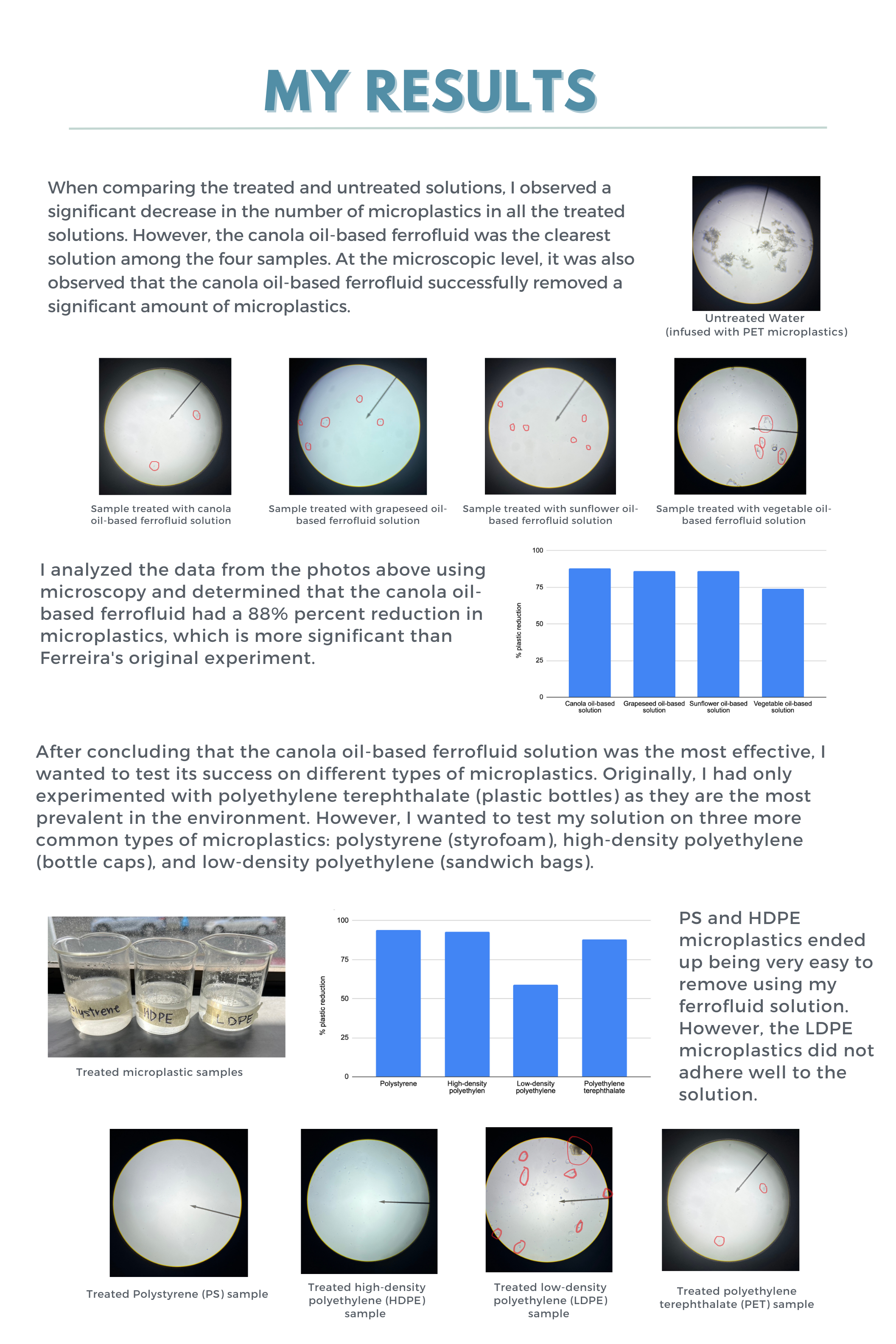Ferrofluids: The Solution to the Growing Microplastic Pollution Problem
In today’s world, plastics are everywhere. They have become one of the most useful, yet harmful products utilized around the world. Every day, approximately 8 million pieces of plastic pollution find their way into our oceans and every year, 12 million tons of plastic are poured in. This excessive plastic pollution has been detrimental to various wildlife habitats, in particular, marine life.
Over time, plastic debris breaks down into smaller and smaller pieces that can be less than 5mm in diameter. These forms of plastic are known as microplastics. When fish, crustaceans, or other aquatic species inadvertently consume these microplastics, it can block their digestive tract and change their eating behaviors. Beyond marine life, microplastics are also passed between organisms through the food chain, where humans have been eating these infected species. In fact, microplastics have even been found in the human bloodstream. For the sake of our health and our environment, it is important that microplastics are reduced.
Recently, an Irish scientist named Fionn Ferreira discovered a way to save aquatic life from the growing plastic pollution problem. Previously, there had been no way to remove microplastics from water other than filtration, which was a long slow process. But, Ferreira thought he could find a way to make this process more efficient. After seeing a rock with plastic particles stuck to oil spill residue, he realized that microplastics are generally nonpolar and oil is also nonpolar. Because in chemistry, “like attracts like”, nonpolar things attract other nonpolar things. This idea was interesting but not very effective because you would just be adding oil to the environment. He later realized that he could use something called ferrofluids.
Ferrofluids are magnetic liquids with tiny iron particles suspended in oil. Essentially, it’s just rust powder mixed with vegetable oil. By adding this to water that has microplastics, you would be able to basically magnetize the oil-containing plastic mixture and use a magnet to remove it from the water. For my project this year, I want to recreate Ferreira’s experiment for myself. But I also want to do a few things differently. When he tested his theory, he only used vegetable oil as a base for his ferrofluid solutions. I want to test various types of oil to see which is the most effective. I also want to test a wider variety of microplastics, especially with different densities, in order to better understand the effectiveness of my ferrofluid solutions. It would also show me what type of materials are easiest to remove.
To test my result, I will collect samples before and after I use the ferrofluid solutions, and examine them under a microscope to see if there is a reduction in microplastics. A high concentration of microplastics in water can also decrease ammonia levels. So, I was thinking that I could test the ammonia levels of my before and after samples as well.
This experiment can be beneficial to people all around the world. At this point, microplastics are everywhere. They have shown up under the microscope in air samples from remote mountain peaks, ice from arctic waste, and sediment from the deepest ocean trenches. Improving the methods for removing microplastics will be advantageous worldwide.




